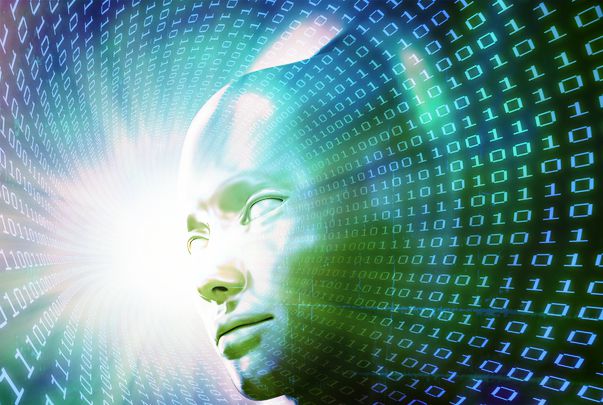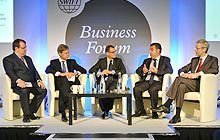Barcodes have become an indispensable part of our daily lives, revolutionizing industries ranging from retail and healthcare to logistics and manufacturing. In the recent episode of the Dinis Guarda YouTube Podcast, the inventor of the barcode, Paul McEnroe, explains the journey of modern barcodes, marked by innovation, standardisation, and overcoming numerous challenges.

According to a study by Precedence Research, the global contactless payment market size is projected to surpass US$ 4.60 trillion by 2027. From retail to a wider spectrum of industries including healthcare, logistics, manufacturing, fashion, payments, and even art, barcodes are transforming our lives in the most innovative ways.
Paul McEnroe, a former group director at IBM, was part of the team pioneering the development of the Universal Product Code (UPC), also known as the barcode. His book, “THE BARCODE: How a Team Created One of the World’s Most Ubiquitous Technologies”, was published by Silicon Valley Press in the Fall of 2023, where he pens down significant milestones and also demystifies many concepts related to barcode.
During the interview, Paul shares some of the profound experiences and memoirs of this development journey with Dinis. He said that the initial idea behind the development of a barcode was to build up an innovation that would promote the computational skills of computers and related technologies. After years of extensive research, the product was finally accepted widely.
“In 1973, about 20 years ago, it was selected as an international standard”, Paul told Dinis. “That was when we realized that technology is going to have an impact on the world. We did think that it was going to control the supermarkets and specific retail stores, hypermarkets, and hotels and motels, but it wasn’t until the early 80s that we really saw it growing big and controlling a lot.”
The evolution of the barcode system
Historically speaking, the first patent for a barcode system was issued in 1952 to inventors Norman Joseph Woodland and Bernard Silver. Their design consisted of concentric circles that were decoded using an overhead scanner. However, this early system was impractical and not widely adopted. Then in the 1960s, David Collins, an engineer at Sylvania, introduced the bull’s eye barcode. This system used a round symbol with a series of concentric circles and a barcode reader.
However, it was in 1974 that a team of IBM engineers, of which Paul was a part, created the Universal Product Code (UPC). This rectangular barcode with a 12-digit number, which is now commonly seen on products, was designed to improve inventory management and streamline the checkout process at grocery stores.
Paul told Dinis that IBM chose to keep UPC and its applications open to the public. “I think, because it was not proprietary, it is such a wide national standard. If it had been proprietary, then other subsequent versions or slightly different codes would have appeared, and then none of them would have become the real code.”
The present day barcode
Highlighting the challenges that arose while developing the technology, Paul told Dinis that the prime issue was developing better scanning modes. The use of lasers, he said, was the very first reason that barcode adoption faced resistance during its early days.
But, as a technologist himself, he explained how the team at IBM proved it through extensive research that “you could not hurt with only half a watt laser, that was there in the supermarkets. So, after a few years, all those things fizzed away.”
He also highlighted that the early barcode printing technology was not as precise as today’s methods. The quality of printed barcodes could vary significantly, leading to misreads and errors during scanning.
“As I’ve pointed out in the appendix and elsewhere in the book, one of the real problems was getting the reliability early on, when printing was of very poor quality.
We had very inexpensive printers that printed at a very high speed and they caused two things: first was the blurring along one of the edges, whichever was the direction of the motion of the paper through the printer; and the second was that the printer had either too much ink or not enough ink often times.
With this, we realized, you get terrible error rates. So, to overcome this challenge and to get trust of the people, we had to find out other ways of reading the vertical bars”, he said.
The Universal Product Code (UPC) helped address some of these size and shape constraints with its standardized format, by reading the space between the leading edges of two successive black bars.
It was this success of the barcode system that since the 1980s, barcodes expanded beyond retail and made their way into various industries, including manufacturing, healthcare, and logistics. This period saw the development of barcode symbologies, such as Code 39 and Code 128, which allowed for encoding alphanumeric characters as well.
The modern day system of QR codes
The 1990s brought advancements in 2D barcodes, which could store more data than traditional linear barcodes. In 1994, Denso Wave, a Japanese subsidiary of Toyota, created the Quick Response (QR) code. QR codes gained popularity with the rise of mobile devices and smartphones.
However, Paul says:
“Because it is inexpensive, so widely used, and without any royalties, I don’t think any innovation can replace the bar code itself. Although, I do think there is going to be a boom in QR codes and RFIDs, and other such innovations.”
Since the beginning of the 21st century, the world has witnessed the widespread use of barcode scanners and the integration of barcode technology into mobile apps. This allowed consumers to scan barcodes on products to access product information, compare prices, and read reviews.

With a driving passion to create a relatable content, Pallavi progressed from writing as a freelancer to full-time professional. Science, innovation, technology, economics are very few (but not limiting) fields she zealous about. Reading, writing, and teaching are the other activities she loves to get involved beyond content writing for intelligenthq.com, citiesabc.com, and openbusinesscouncil.org




























